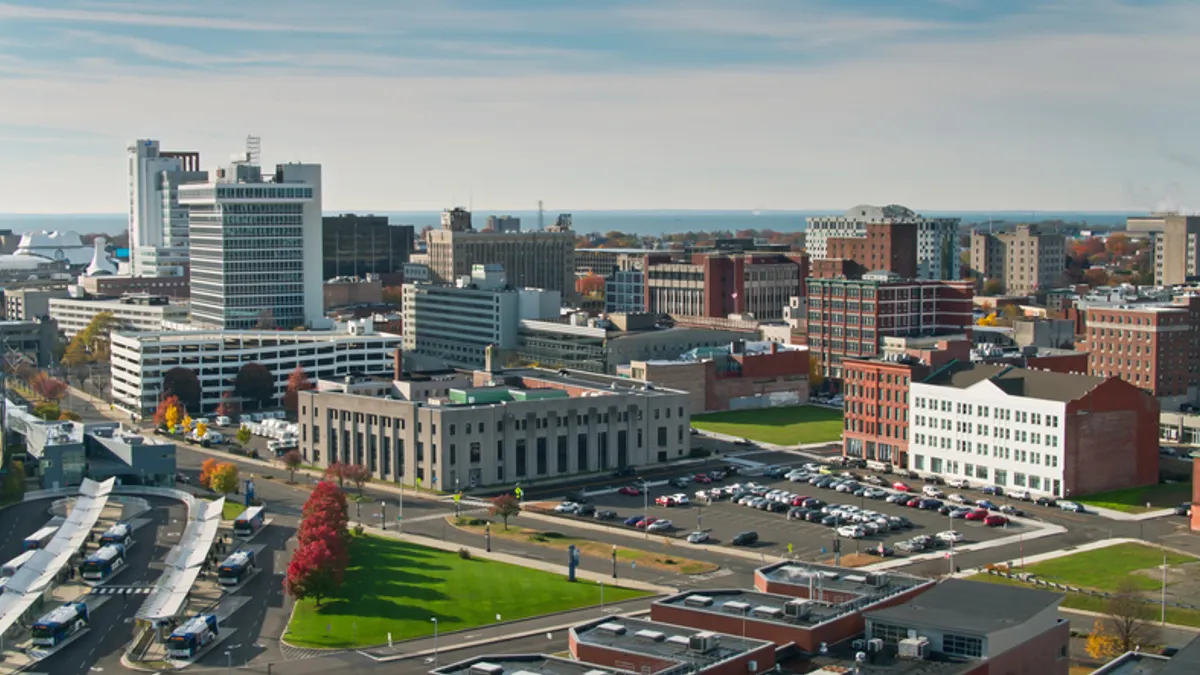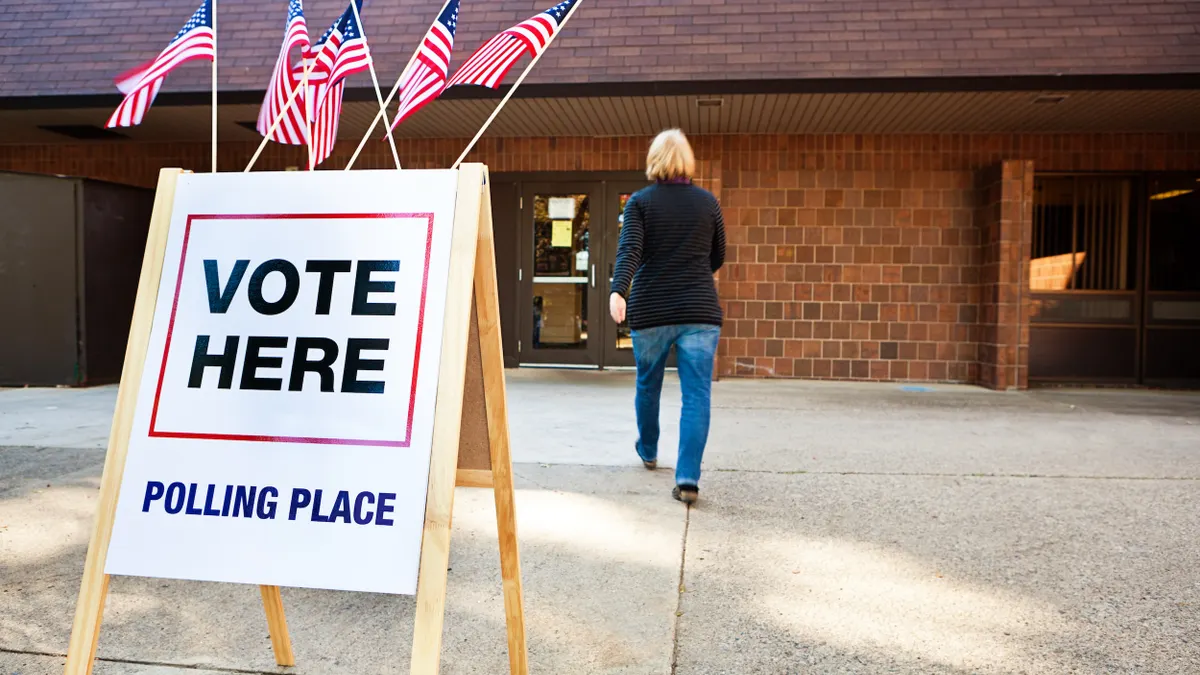Thinking of smart cities can conjure up images of autonomous cars and the 5G network, but there are plenty of other technologies that are shaping how cities are transformed. While some of these technologies may not have as direct of an impact on an urban-dweller's life as getting in a self-driving car, they all have the potential to shape how smart cities develop into a sustainable future.
Artificial Intelligence
Artificial intelligence (AI), from algorithms that can determine what's in a photo to finding patterns in billions of points of data, are increasingly being developed. For cities, different AI could be added to a host of smart city initiatives. A Deloitte study found that AI could free up 30% of government workers' time within 5-7 years.
"With AI, you’re going to be able to reduce cost, increase speed and increase productivity if it’s done right," said Bill Eggers, an executive director at Deloitte and an author on the study.
For residents, much of the first AI interactions in their cities might be with chatbots, which are already on the rise in consumer products. Already, Los Angeles’s Chip ("City Hall Internet Personality") has helped around 100,000 business searches since launching in March, and has tripled his answer base from around 200 to roughly 700 questions. Chatbots could be added to a city's department of motor vehicles, 311 line or any number of other city departments that have to interface with residents, especially for questions that come up again and again.
The Southern Nevada Health District (SNHD), which oversees public health matters in Clark County, recently turned to Twitter to improve how it decides to target eating establishments for inspection. Using data from Twitter, an algorithm can use natural language processing to find users talking about food poisoning and flag the restaurants those users visited. During a three month test run, the algorithm scanned an average of 16,000 tweets from about 3,600 users.
Inspectors who used the AI to target restaurants found violations during 15% of inspections, while a control group of inspectors not using an app found violations during 9% of inspections. Researchers estimate that if all inspectors used the app and the AI, there would be 9,000 fewer cases of food poisoning and 557 fewer hospitalizations in Las Vegas each year.
Nvidia, a chip maker that many AI companies rely on, recently suggested that security camera feeds could be turbo-powered with AI. Security footage scanned in near real-time by AI could find missing persons, send out traffic warnings, notify residents of nearby emergencies and alert police to crimes in progress. Nvidia has partnered with 50 security camera companies to test the concept.
Certainly, there are privacy concerns, and problems with making sure the AI doesn’t inherent human biases when making decisions. Cities also need to have a plan when AI starts to eliminate jobs, which it will, no matter what some government officials might think. But AI is already on its way to making cities smarter.
Software and platforms
Smart city hardware, from the blossoming Internet of Things to smart grids, need software.
"Software is the integrator for smart cities initiatives," said Julia Thayne, Siemens’ director of urban development.
Siemens started a division focused on smart city practices after it realized how much business was coming through cities.
"Siemens wanted to speak the language of cities," Thayne said.
It started to build software proactively, instead of just responding to a request for proposals (RFP). One of the tools, Siemen’s City Performance Tool, looks at 16 smart technologies that help reduce greenhouse gas emissions. Using the tool, Minneapolis discovered electric cars were the most effective way to reduce emissions (other than renewable energy), which led city officials to develop a project to help design an electric vehicle strategy.
Software — and therefore, data — is increasingly interconnected. Think Facebook, where you can share photos, message people and read the news, instead of a single-function app, like a notepad.
"Before now, everyone was very concerned about keeping their data in their department," said Parthiv Patel, technical marketing manager of Built.io, a software company with multiple products that smart cities utilize.
Integrating different systems can increase cost efficiency, help cities figure out how much buying power they have and even become a potential revenue resource if that data becomes attractive to companies who will pay for the privilege of using or seeing that information.
LiDAR
LiDAR, an acronym for Light Detection and Ranging, is a remote sensing method. Google uses the technology for its self-driving cars but there are other uses for LiDAR in cities. San Francisco used LiDAR to map a major thoroughfare through the city in preparation for a redesign, and Baltimore used LiDAR after protests to map the damage.
LiDAR could be extended even further than mapping streets, as it can see through rain, darkness, shadows or bright lights. The 3-D mapping is hard to confuse and is very accurate.
"Any application where awareness of what is going on around you is useful can use LiDAR," said Louay Eldada, the CEO of Quanergy, a LiDAR company.
LiDAR can be used for security purposes, like watching shoppers at a mall or attendees at a concert to know what individuals are doing. LiDAR could assist in industrial settings, putting the technology on robots so they don’t collide with anything or optimize truck-loading by figuring out the best way to arrange parcels.
So far, high costs have kept LiDAR from widespread implementation. For Google’s autonomous vehicle, the original LiDAR cost was over $80,000 per car. Getting the cost to hundreds or low thousands will have to happen before most customers are interested or able to afford the technology.
"There is no reason not to use it if you can afford it," Eldada said.
Quanergy and others are working on getting the cost done, and changing the technology to make it more nimble. Making it cheaper could help entrepreneurs find new ways to use the technology.
Drones
Drones have a lot of possibilities for cities, but face a tough regulatory environment that make it tricky to use drones in urban areas. They can’t fly within five miles of an airport without a special permit, putting parts of many cities out of reach. They also aren’t allowed to be flown out of line of sight. There are also serious regulatory issues around privacy, and drones are thought of in popular culture as a weapon.
"Drones still have a connotation to them," said Robert Wood, chairman of Measure, a drone services company.
But drones have a lot of other uses. They can look at construction and development for city planners to make sure things are progressing according to plan. Drones could be sent under a bridge for inspections or up a facade of a building, instead of putting humans at risk on a scaffold.
"There isn’t a day that goes by where we don’t have a new idea," Wood said.
Drones are already proving themselves. Verizon used drones in North Carolina and South Carolina after Hurricane Matthew to check on hard-to-reach areas to check on their equipment. Verizon said they knew it was important to make sure people could communicate after a natural disaster.
"You could easily argue that for smart cities they should be working with drone technology," Wood said. "Especially on safety issues."


















